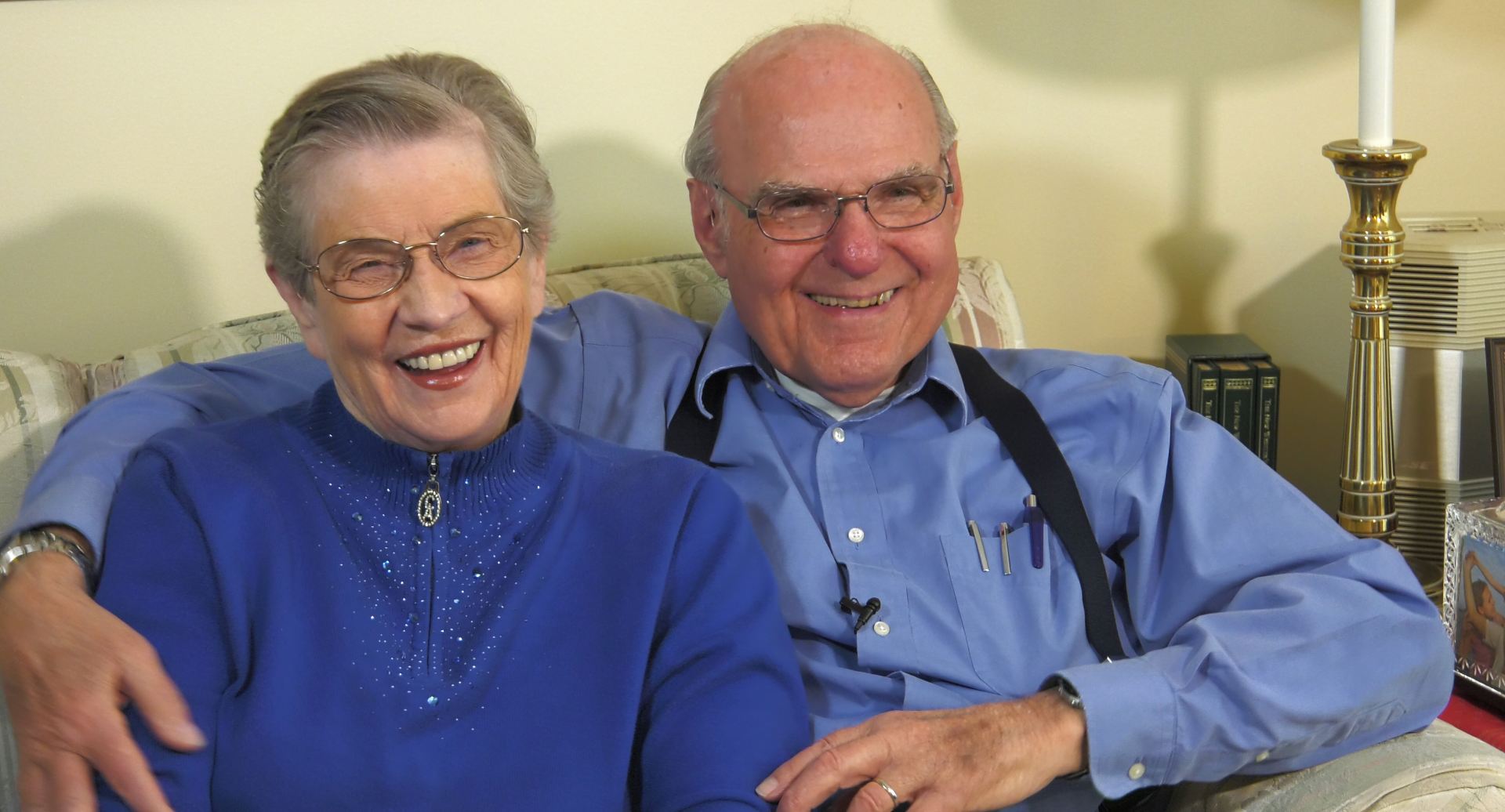
Tom Moore takes care of his wife LaVonne, who has Alzheimer’s disease. A new study shows that an implanted pacemaker that sends electrical stimulation to LaVonne’s brain slowed the progression of her symptoms, allowing her to retain functionality longer. Credit: Courtesy of OSU
Tom Moore always said his wife has had Alzheimer’s disease longer than anyone he has known.
Though it might sound negative, it’s from a place of love.
“It means LaVonne is still here while other people we knew with Alzheimer’s, they’re gone, and LaVonne is still hanging on, for which we’re very glad,” said Tom Moore, 89, of Delaware, Ohio.
One of the reasons LaVonne Moore, 85, has been so successful in fighting the disease is a “brain pacemaker” developed by researchers from Ohio State’s Wexner Medical Center.
After LaVonne Moore received the implant, she underwent several physical, speech and occupational therapies — which is when Tom Moore noticed a change.
“It was that time when we saw the first improvement in LaVonne when she was able to do things she hadn’t been able to or wasn’t wanting to do before,” which included baking brownies, he said.
The brain pacemaker was developed to slow the acceleration of Alzheimer’s disease. It works similar to a heart pacemaker, in that the brain is wired to a battery that sends electrical impulses to the brain, similar to a pacemaker for a heart, said Douglas Scharre, a neurologist at the medical center who authored a recent study on brain pacemakers and its effects.
Scharre said the implant was already being used to treat patients with Parkinson’s disease, but had not yet been used for Alzheimer’s.
“There’s a particular part of the brain that controls [a person’s] motor and tremor and genesis [controls], so you can stimulate and inhibit that area of the brain with these wires and boom, the tremors are gone,” Scharre said.
The differences between Alzheimer’s and Parkinson’s made adapting the implant to Alzheimer’s treatment difficult, Scharre said, because Alzheimer’s affects more widespread areas of the brain.
He said Alzheimer’s disrupts memory circuits, whereas “Parkinson’s is one little tiny area of the brain that controls these motor controls, so it’s easy to target.”
Since studies showed physical and mental activity slow the decline of Alzheimer’s patients, Scharre said the researchers decided to artificially stimulate the front part of the brain, instead of one specific part.
“The purpose there was to try to help ameliorate the symptoms of executive abilities of patients,” he said. “Those are things like problem solving, decision making, focusing your attention, judgments, organization, planning.”
Even so, the implant is not a cure, he said.
“It wasn’t really the thought that we would help with the progressive course of the disease, but maybe help the symptoms of the disease, and perhaps slow down the disease,” Scharre said.
Though LaVonne Moore made some improvements, like regaining the ability to bake, her memory with the implant still declined, Tom Moore said.
“Right now, her memory is not very good in the least bit,” he said. “I talk about a 30-second memory, for example.”
This 30-second memory is as if a person woke up and did not know who they were, where they were, what day it was or who the other person in bed with them was, Tom Moore said.
“You become isolated because you’re fearful of whatever the rest of the world is,” he said.
Still, the implant, Tom Moore said, has allowed him and LaVonne to grow closer together.
“[Growing closer was] through necessity you might say, but still emotionally. It’s a love of compassion rather than a love of passion,” Tom Moore said. “ We’re just hoping somehow we’ll find a cure for [Alzheimer’s].”
Although the implant is not a cure, Scharre hopes the technology can be a step in the right direction to find a cure or a better treatment for the disease.
“It’s a combined approach. I think in the future we’re going to have people on four, five different treatments for Alzheimer’s,” said Scharre, who also compared it to how people use multiple medications to treat diseases such as diabetes. “We want everyone to keep looking for cures and disease modifying agents.”


